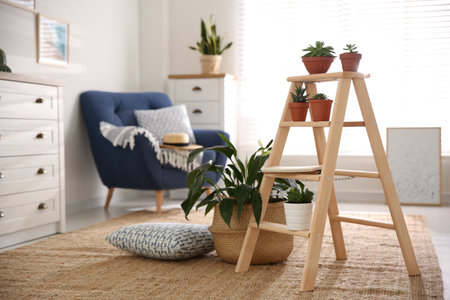The Second-Hand Furniture Scene in the UK
In the UK, sourcing second-hand furniture is more than just a thrifty way to furnish your home—its woven into the fabric of British culture. The appetite for pre-loved pieces reflects both a deep-rooted nostalgia and a forward-thinking approach to sustainability. From the bustling charity shops on every high street to lively flea markets and curated online marketplaces, Britons have a particular fondness for vintage finds and upcycled treasures. This enthusiasm is partly fuelled by the countrys commitment to reducing waste and supporting circular economies, as well as a genuine appreciation for the stories and craftsmanship that older items often hold. Whether it’s an art deco sideboard or a mid-century Ercol chair, each piece carries a sense of history that aligns with the British love for heritage and individuality. As sustainability trends continue to shape consumer choices, buying second-hand has become not only fashionable but also ethically desirable, making the UKs furniture scene a rich tapestry of past and present values.
2. Top Charity Shops for Furniture Finds
When it comes to sourcing second-hand furniture in the UK, charity shops are at the heart of a thriving circular economy. These shops not only offer a treasure trove of pre-loved pieces but also champion sustainability and provide vital support to local communities. Among the most notable British institutions specialising in furniture are the British Heart Foundation, Emmaus, and Sue Ryder. Each brings a unique ethos and set of services that extend far beyond retail.
The Big Three: Institutions Making an Impact
| Charity Shop | Key Features | Community Impact |
|---|---|---|
| British Heart Foundation | Wide range of donated furniture; nationwide stores; free collection service | Funds research into heart diseases; supports education programmes |
| Emmaus | Furniture workshops; upcycling initiatives; community living model | Supports formerly homeless people with housing and work opportunities |
| Sue Ryder | Diverse selection including vintage finds; delivery options available | Funds palliative, neurological, and bereavement support services |
Supporting Local Communities Through Furniture Shopping
Shopping at these charity outlets is a distinctly British way to furnish your home with character while giving back. Unlike standard high street shops, each purchase or donation helps fund essential services—from medical research to homelessness prevention. Many of these organisations operate large-format stores or dedicated furniture warehouses, making it easier than ever to find everything from sofas to sideboards without breaking the bank.
Navigating Your Local Offerings
To discover what’s available near you, look out for regional branches or flagship stores—often located on retail parks or high streets. Online store locators and click-and-collect options are now commonplace, combining the best of traditional charity shopping with modern convenience. Ultimately, by choosing second-hand from these trusted British names, you’re not just furnishing your space—you’re investing in the fabric of your community.

Best Markets for Unique Furniture Pieces
When it comes to sourcing second-hand furniture in the UK, markets are a treasure trove for those seeking something truly distinctive. These bustling venues blend history, local culture, and a spirit of discovery, making them ideal for both seasoned collectors and first-time buyers. Sunbury Antiques Market, held at Kempton Park Racecourse, is a mecca for vintage enthusiasts. Here, you’ll encounter everything from elegant mid-century sideboards to rustic farmhouse tables, with traders hailing from across the country. The atmosphere is unmistakably British: think hot cups of tea in hand as you haggle over a G-Plan armchair or unearth an unexpected Danish design classic.
Heading north, The Barras Market in Glasgow is an institution that captures the city’s vibrant spirit. This legendary market is famed for its jumble of curiosities—retro lamps, Victorian wardrobes, and even upcycled industrial pieces. You’ll find locals swapping stories as they browse, lending a sense of community to your hunt for that perfect piece.
Beyond these standouts, regional flea markets and car boot sales—from London’s Old Spitalfields Market to Bristol’s Harbourside Market—offer their own unique mix of finds. These settings provide more than just shopping opportunities; they’re windows into British life where every scratch and patina on a piece tells its own story. Whether you’re after kitsch 1970s coffee tables or understated Edwardian chairs, the UK’s markets promise endless possibilities for those willing to explore.
4. Navigating Online Second-Hand Platforms
When it comes to sourcing second-hand furniture in the UK, the digital landscape has become just as vital as your local high street. Online platforms such as Gumtree, Facebook Marketplace, and Preloved have transformed how Britons buy and sell pre-loved treasures, offering a convenient way to browse thousands of listings from the comfort of your own home. Here’s an overview of these popular platforms and some quintessentially British tips for scoring top-notch bargains while practising safe and polite online etiquette.
Popular Online Platforms at a Glance
| Platform | Main Features | Best For |
|---|---|---|
| Gumtree | Localised listings, direct messaging, wide range of categories including furniture | Bargain hunters seeking everything from vintage sofas to flat-pack wardrobes within their local area |
| Facebook Marketplace | Integration with Facebook profiles, real-time chat, user reviews, location filters | Social buyers looking for quick deals with the added security of checking seller profiles and mutual friends |
| Preloved | No listing fees for most users, community feel, detailed search filters | Eco-conscious shoppers interested in sustainable choices and unique finds outside mainstream retail options |
Tips for Bagging the Best Deals
- Be Quick Off the Mark: Good quality pieces get snapped up fast. Set up alerts or check listings regularly – especially on weekends when new items are often posted.
- Refine Your Search: Use specific keywords like “Ercol sideboard” or “mid-century armchair” along with your postcode to narrow down results.
- Negotiate Politely: It’s customary in Britain to ask if there’s any “wiggle room” on price. Always be courteous: “Would you consider £30?” goes a long way compared to blunt offers.
- Check Condition Thoroughly: Ask for extra photos if needed, and don’t be afraid to query about wear-and-tear or measurements—most sellers are happy to oblige.
- Avoid Scams: Never send money before seeing the item in person, and be wary of suspiciously low prices. Meet in public places or bring a friend for collection where possible.
British Online Etiquette Essentials
- Manners Matter: Always open with a greeting (“Hi there,” or “Hello!”) and thank sellers for their time—even if you don’t go ahead with the purchase.
- Punctuality is Politeness: If arranging viewings or collections, be prompt or communicate delays early. Reliability is valued highly in British peer-to-peer exchanges.
- Straightforward Communication: Be clear and concise about your intentions—if you’re just enquiring or genuinely interested. This helps avoid wasting anyone’s time.
The Takeaway
Navigating the world of online second-hand furniture shopping in the UK is as much about culture as it is about commerce. By blending digital savvy with traditional British courtesy, you’ll not only find fantastic pieces for your home but also enjoy a smoother—and more pleasant—buying experience.
5. Restoring and Personalising Your Finds
Once you’ve sourced your second-hand furniture from Britain’s myriad charity shops, bustling markets or savvy online platforms, the real fun begins: restoring and personalising your unique pieces. The UK boasts a rich tradition of DIY culture, where rolling up your sleeves and giving pre-loved items a new lease of life is as much about creativity as it is about sustainability.
Cleaning Up: The British Way
Start with a proper clean. For wooden furniture, a gentle wipe down with warm soapy water and a soft cloth often does the trick. Stubborn marks can be tackled with a touch of bicarbonate of soda or white vinegar—both staples in British households. Upholstered items may benefit from a sprinkle of baking soda to neutralise odours before vacuuming thoroughly. Remember, patience is key; rushing this stage could damage delicate finishes beloved in vintage British design.
Restoration Tips Inspired by Local Traditions
Many Britons love to restore rather than replace. For scuffed wood, try using beeswax polish (a nod to traditional English craftsmanship) to revive its natural sheen. Loose joints can often be fixed with wood glue and clamps, readily available at any local hardware shop. If you stumble upon an ornate Victorian chair or mid-century sideboard, consider consulting local experts or community workshops—many towns have repair cafes where seasoned hobbyists share their wisdom over a cuppa.
Personal Touches: Making It Yours
The joy of second-hand shopping lies in customisation. Paint remains ever-popular—think chalky pastels for a cottagecore look or bold hues for contemporary flair. Decoupage, stencilling, and reupholstery are also popular ways to add character, drawing inspiration from classic British interiors or the latest design magazines. You might even repurpose old handles from another find for that quintessentially eclectic touch seen in many UK homes.
Ultimately, restoring and personalising second-hand furniture isn’t just practical—it’s a celebration of resourcefulness deeply woven into British culture. Whether you’re sanding back an Edwardian side table or hand-painting a set of mismatched dining chairs, every brushstroke connects you to generations of makers who value both heritage and individuality.
6. Tips and Etiquette for Buying Second-Hand in Britain
Sourcing second-hand furniture in the UK is not just about the thrill of a bargain or environmental consciousness—it’s an experience shaped by local customs, etiquette, and practical know-how. Whether you’re navigating the bustling stalls of a market or browsing the carefully curated shelves of a charity shop, understanding British buying culture will ensure your hunt is both successful and enjoyable.
Respectful Haggling: The British Way
While haggling may be commonplace at car boot sales and antique markets, it’s approached with characteristic British politeness. At charity shops, prices are usually fixed to support charitable causes; overt attempts at bargaining can be seen as inappropriate. At markets or when buying from individuals online, it’s perfectly acceptable to make a reasonable offer—but always with courtesy and a smile. Phrases like “Would you consider…” or “Is there any flexibility on price?” go much further than aggressive negotiation.
Collection and Logistics: Planning Ahead
Many charity shops and online sellers expect buyers to arrange their own transport for larger pieces of furniture. It’s wise to check access points—doorways, stairs, lifts—before purchasing, as well as to bring necessary tools for disassembly if required. Some shops offer delivery for a small fee, but this isn’t universal, so confirm logistics in advance. For online finds (such as those on Gumtree or Facebook Marketplace), clear communication about collection times is key; punctuality is particularly appreciated.
Charity Shop Etiquette: Supporting Good Causes
Charity shops operate first and foremost to raise funds for their chosen causes. When buying, remember that every penny goes towards supporting vital work in communities across Britain. If you see a staff member restocking shelves or dealing with donations, a simple “thank you” goes a long way. Avoid holding items aside without commitment; if you change your mind about a piece, let staff know promptly so someone else has the chance to buy it.
Market Manners: Navigating Busy Spaces
British markets can be lively affairs, especially at weekends. Be patient and courteous when viewing items—wait your turn rather than pushing ahead. If inspecting furniture closely, ask before touching or moving anything. And should you decide to negotiate on price, keep interactions friendly and brief; the vendor likely has many customers vying for attention.
A Final Word: Sustainability Meets Tradition
Buying second-hand furniture in the UK is an act rooted in both sustainability and tradition. By following local etiquette—respectful negotiation, thoughtful logistics planning, and kindness towards shop volunteers—you not only enrich your own experience but also contribute positively to the vibrant tapestry of British second-hand culture.


